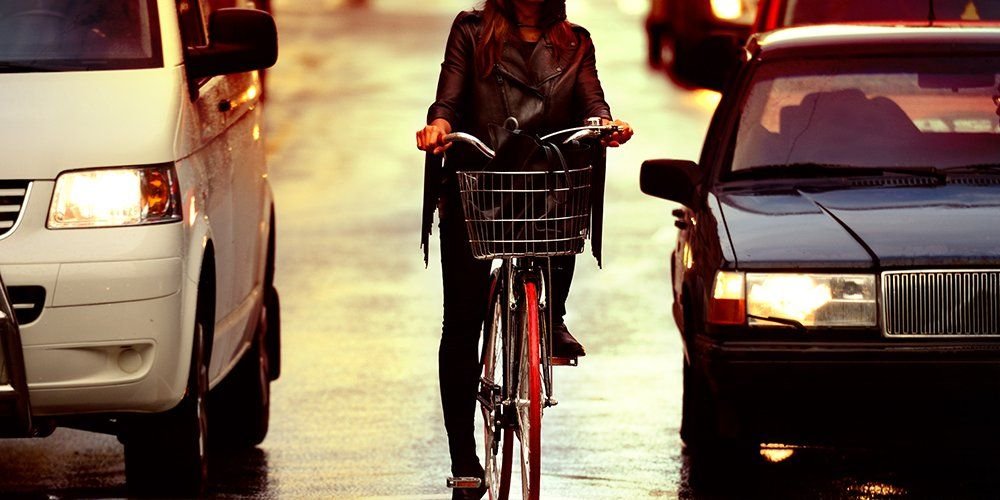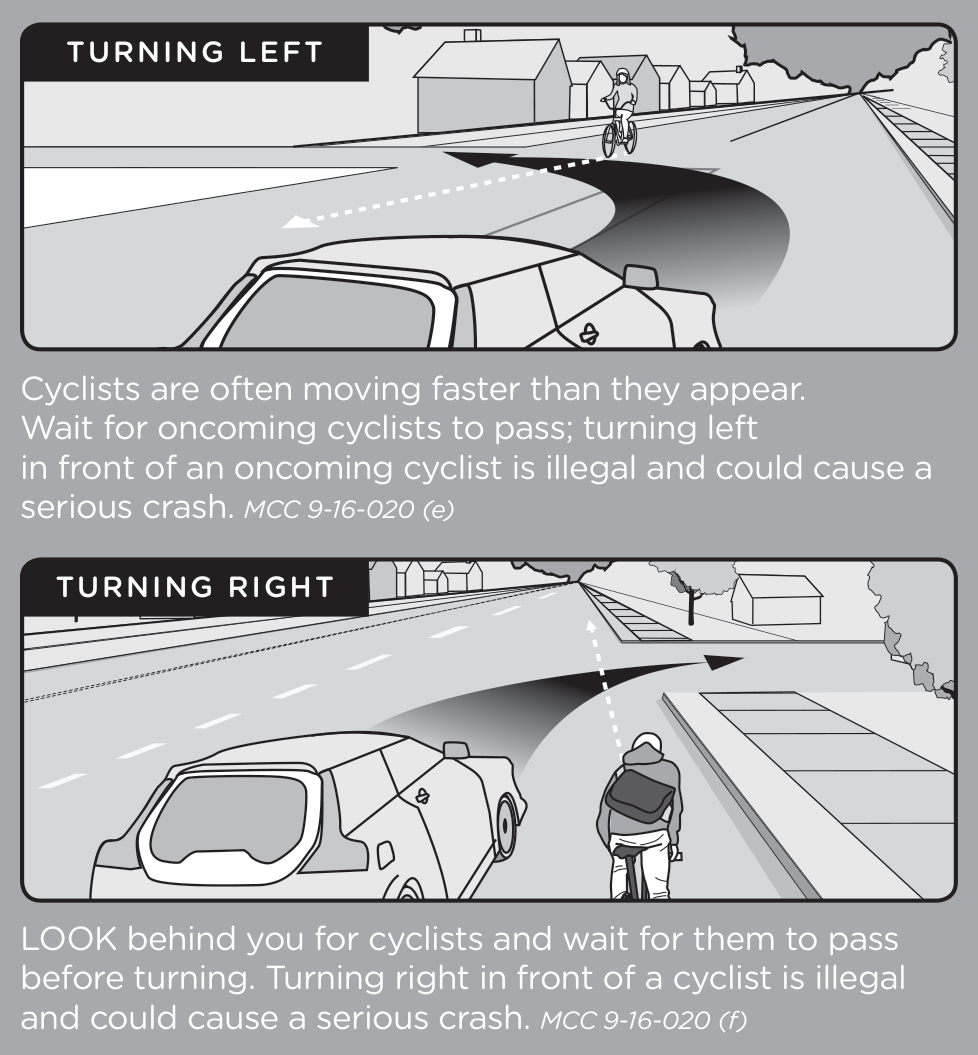How Drivers & Cyclists Can Safely Share the Road
May is National Bike Month, so I’ve got some tips for all road users to share the road safely.
Sharing the road with cyclists and drivers requires patience, communication, and respect from both parties. By following these tips, we can all work together to ensure everyone stays safe on the road.
Cyclists are in a vulnerable position when using roads designed for cars without any of the same protections. Drivers, on the other hand, are often frustrated with the unpredictability of cyclists. However, if everyone can communicate effectively and share space respectfully, then everyone can get where they're going!
Tips For Drivers:
If you’re driving a car, the 3 most important you can do to safely share the road with cyclists & pedestrians is to be aware of your surroundings, give cyclists extra room, and slow down.
Be Alert
Being aware of your surroundings is possibly the #1 thing drivers can do to ensure the safety of not just themselves, but also everyone else in their car & on the road. This of course includes simple things like putting your phone down & not eating while driving. I shouldn’t have to even say this, but it certainly bears repeating since “Eight percent of fatal crashes, 14 percent of injury crashes, and 13 percent of all police-reported motor vehicle traffic crashes in 2020 were reported as distraction-affected crashes.” according to the National Highway Traffic Safety Administration. Just imagine the lives that could have been saved simply by not using your phone while driving.
Beyond that, drivers should remain vigilant when checking their mirrors & blind spots and remember that cyclists could be on the road with them as well. This means checking for bikes when making right turns as cyclists could be coming up in the bike lane to your right side. This also means practicing the Dutch Reach when opening your car door into the street or bike lane. The Dutch Reach is when you use your right hand to open the driver’s side door, which forces your whole body to turn and can increase your awareness of oncoming cyclists.
Give cyclists room
In a car, it can be difficult to accurately determine short distances, but if you’re not sure how much room you should give a cyclist, you should always err on the side of caution. In Illinois, drivers are legally required to pass cyclists with at least 3ft of space between their car and the bike. If you cannot safely pass with that much of a buffer zone, you should continue to drive behind the cyclist until you can. This may require merging into another lane the same way you would pass another car.
3 feet is the minimum amount of space drivers are legally required to give cyclists, more is better if you can do so safely!
It’s important for drivers to remember that people biking legally have the right to take up an entire lane of traffic if they feel it’s unsafe to remain on the right side of the street in the bike lane. This will commonly occur when cyclists have to ride in the “door zone” of parked cars (the area in which a car’s door swings open) or if the bike lane is riddled with potholes. Bikes are far more susceptible to break when riding over damaged roads and a crack that would be no big deal to a car may totally destroy a bike wheel. Cyclists assess risk on the road differently than drivers, so they may see an obstacle that drivers don’t notice – this is why drivers need to give cyclists extra room to react to these hazards and be patient when driving behind someone biking down the center of a roadway.
Slow Down
It’s very common for drivers to drive faster than the posted speed limit, however, you should really think twice before doing so. Driving fast greatly increases the risk of injury or fatality should an accident occur – The Chicago Department of Travel reports that when a driver hits a pedestrian at 20mph, the survival rate for the pedestrian is 95%, but that drops down to 55% when the car is going 30mph and merely 15% at 40mph. Not to mention the fact that a collision is less likely to occur in the first place when driving slowly. This is because the driver will have more time to react to unexpected situations & needs less space to come to a complete stop when driving the speed limit.
When driving, especially down residential streets where cyclists, pedestrians & kids are all common, you should be slowing down to better accommodate all road users & keep everyone safe. Even when you’re running late, it’s helpful to remember that the difference between traveling at 25mph and 35mph for a mile is 41 seconds. Are those 41 seconds really worth putting other people’s lives at risk?
Tips for Cyclists:
When you ride a bike on the road, you take on more risks than you would if you were driving a car on the same road. This is why you should be obeying all traffic laws as they apply to cyclists, make sure that you are visible to drivers and communicate effectively with them.
Follow the rules of the Road
In Illinois, you have the same rights & responsibilities when riding a bike as you do when driving a car. This means that you should obey all signs & signals when it is appropriate to do so – please don’t try to ride your bike as fast as the posted speed limit. This means that you should be riding on the right side of the road in the same direction as traffic and use the marked bike lanes when you can. It also means that you have the right to take up the entire lane if you feel it is unsafe to remain to the side.
By Chicago law, people riding bikes should come to a complete stop at a stop sign, however, you should check out my TikTok on why you really should be implementing a rolling stop on your bike. The short version is that since bikes travel slower than cars, they both spend about the same amount of time at an intersection due to the time it takes for cars to stop and speed up again. Because of this, places that have allowed cyclists to roll through stop signs (only requiring them to yield to other drivers & pedestrians when they reach the intersection first) have actually seen a decrease in cycling-related injuries.
Communicate
It is far easier for drivers & cyclists to effectively share the road with each other when both parties are communicating clearly. For cyclists, this comes basically comes down to indicating what you intend to do next. This is most easily done with hand signals as shown below:
You can also communicate your intent by making eye contact with drivers. This ensures that the driver actually sees your approach, which is especially important at intersections or when merging into traffic.
Visibility
One of the easiest — but most often overlooked — ways to keep yourself safe from car traffic is to ensure that you & your bike are visible. The best way to do this is by having front & rear lights on your bike at all times of the day – yes, even when the sun is out. It has been proven that cyclists who run their lights during the daytime are 19% less likely to be involved in an accident that results in injury.
A hyper-reflective jacket, like this one from Bike Lane Uprising, goes a long way when it comes to being visisble.
Beyond decking out your bike with a bunch of lights, you should also take stock of what you’re wearing before riding in the street. Wearing bright & reflective clothing goes a long way to help cars see cyclists better. It’s important to be visible because when drivers can see cyclists, they are more likely to anticipate their movements and adjust their driving accordingly.







